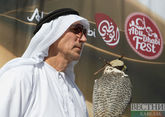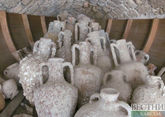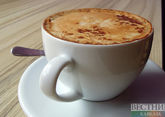The Great Silk Road, which once ran across the territory of modern Kazakhstan, brought representatives of different peoples and ethnic groups to this land. During World War II, the republic gave shelter to representatives of other cultures. Kazakhs, Russians, Uzbeks, Kyrgyz, Belarussians, Bulgarians, Greeks, Poles, Chinese, Koreans, Tajiks, Uighurs, Kurds, Armenians, Jews, Chechens live here now... And one of the little-known peoples of multinational Kazakhstan is the Dungans.
Where is their homeland
The Dungans migrated to Kazakhstan and Kyrgyzstan from China in the 19th century. They are considered one of the Hui group of people. In China, Hui people have its own Ningxia Hui Autonomous Region. About 60 thousand representatives of this ethnic group live in Kazakhstan, about 80 thousand in Kyrgyzstan, and about 1.5 thousand people in Russia.
During the rule of Qing Dynasty, the Dungans repeatedly participated in revolts, the largest of which was the Dungan Revolt (1862-1877). After it was suppressed, the rebels took out Russian citizenship, fearing reprisals and punishments in China.
Over the centuries, China's assimilation attempts have been unsuccessful. The spiritual values of Islam were stronger. Now Hui people is considered not only a religious group in China, but also ethnocultural.
The Dungans have preserved the Chinese language and traditions. Ethnolinguists classify their language as part of the Sinitic branch of the Sino-Tibetan linguistic family. Dungan was originally written with a version of the Arabic alphabet, then with the Latin alphabet, and later in Cyrillic.
The ethnonym
The ethnonym 'Dungan' has several versions of origin. Some researchers believe that it is associated with the Turkic word 'döñän' (one who turns). According to this version, the Dungans descended from Tamerlane's descendants, who remained to live in China. Chinese researchers consider a version that the word has Chinese roots, as it has a consonance with the word 'tunken' - inhabitants of the lands bordering China, speaking their language.
How do they look
The Dungans are Mongoloids - they are black-haired, with prominent cheekbones. Their noses are larger than Chinese, and their constitution is more robust.
What do they do
From ancient times, their main occupations were livestock breeding and agriculture. From crafts - these are blacksmithing, carpet weaving, pottery, weaving, embroidery, jewelry.
How do they dress
Their national costume is similar to Chinese: men wear loose long shirts without a collar and harem pants, in winter - they wear quilted robes; women - harem pants and short shirts with a side fastener or straight dresses with a stand-up collar.
What do they eat
Like the Chinese, they like rice, but steamed and without salt. Spicy appetizers are made using vegetables, including onions, garlic, chili peppers, dill, celery, coriander, ginger, and zira. From meat - lamb, beef and poultry. They use the Dungan vinegar, which has a dark shade and pungent smell. With dough they make noodles, pies, pasties, as well as brushwood. The Dungans are forbidden to drink alcohol. Instead, they drink tea with nuts, ginger, dried fruits, dates. There is an Asian recipe to make tea with salt and milk.
Religion and Holidays
The Dungans profess the Sunni Islam, so they celebrate Ramadan, Eid al-Fitr, Eid al-Adha and Nowruz. The wedding celebrations may last for several days. Previously, Dungan marriages were arranged by parents, now - these are love marriages.










